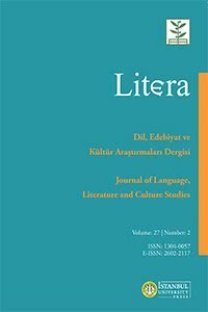THE PHOMEMIC INTERPRETATION OF THE OLD ENGLISH DIPHTHONGS
Before the question of the phonemic interpretation of the OE diphthongs comes the question of the phonetic interpretation of the digraphs traditionally regarded as representing "short diphthongs". I~ is _notorious that some scholars are no longer able to accept a distmct10~ of long and short diphthongs parallel to that of the simple vowels m Old English. The subject was debated at our last conference hel~ at Paris. This debate confirmed my impression that the various a_ssa1lants of the traditional view can in no way be considered as allies: they appear to have a common foe, but in fact differ far more among each other than some of them differ from the traditionalists. . First there is the view that the OE digraphs eo and ea, where hitherto held to represent "short diphthongs", actually indicated a short vowel followed by a consonant which was velarised or accompanied by rounding 01! at least had some quality which the second element of the diphthong would have had according to the traditional view. This opinion of A. Reszkiewicz is rather attractive, but we can safely leave the decision to comparative phoneticians. What needs to be stressed here is, that no question of phonemics is involved. If it is true (as it may well be) that the difference between bearne and baerne lay in the first post-nuclear consonant rather than in the vocalic nucleus, whereas the difference between reade and raede lay (as nobody wishes to dispute) in the vocalic nucleus, then phonemically the position was this: whereas the long diphthongs were rendered phonetically by diphthongs, there was in the case of the short diphthongs an automatic displacement of the second element into the following consonant. In other v.rords, the phonemic opposition "long diphthong" I "short diphthong" was represented phonetically by the difference between a normal diphthong and a normal short vowel followed by velarised consonant. There could be no question of setting up an independent series of velarised consonants.
THE PHOMEMIC INTERPRETATION OF THE OLD ENGLISH DIPHTHONGS
Before the question of the phonemic interpretation of the OE diphthongs comes the question of the phonetic interpretation of the digraphs traditionally regarded as representing "short diphthongs". I~ is _notorious that some scholars are no longer able to accept a distmct10~ of long and short diphthongs parallel to that of the simple vowels m Old English. The subject was debated at our last conference hel~ at Paris. This debate confirmed my impression that the various a_ssa1lants of the traditional view can in no way be considered as allies: they appear to have a common foe, but in fact differ far more among each other than some of them differ from the traditionalists. . First there is the view that the OE digraphs eo and ea, where hitherto held to represent "short diphthongs", actually indicated a short vowel followed by a consonant which was velarised or accompanied by rounding 01! at least had some quality which the second element of the diphthong would have had according to the traditional view. This opinion of A. Reszkiewicz is rather attractive, but we can safely leave the decision to comparative phoneticians. What needs to be stressed here is, that no question of phonemics is involved. If it is true (as it may well be) that the difference between bearne and baerne lay in the first post-nuclear consonant rather than in the vocalic nucleus, whereas the difference between reade and raede lay (as nobody wishes to dispute) in the vocalic nucleus, then phonemically the position was this: whereas the long diphthongs were rendered phonetically by diphthongs, there was in the case of the short diphthongs an automatic displacement of the second element into the following consonant. In other v.rords, the phonemic opposition "long diphthong" I "short diphthong" was represented phonetically by the difference between a normal diphthong and a normal short vowel followed by velarised consonant. There could be no question of setting up an independent series of velarised consonants.
